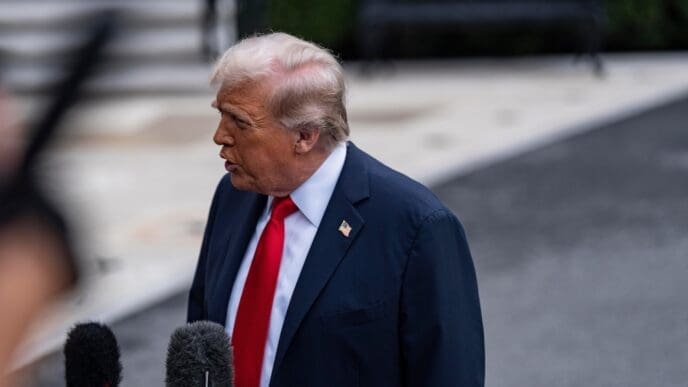Executive Summary
The Story So Far
Why This Matters
Who Thinks What?
President Donald Trump repeated a long-debunked claim regarding the total amount of U.S. aid provided to Ukraine during a White House meeting with Ukrainian President Volodymyr Zelensky on Monday. Trump asserted that the United States has allocated “well over $300 billion” in wartime assistance to Kyiv, a figure that is significantly higher than official estimates from various sources.
Disputed Figures Cited
During his televised remarks, Trump stated, “I guess the number is well over $300 billion.” He further elaborated, “Under Biden, it was just crazy what was going on. I believe the number is over $300 (billion). I think it could be $350 billion worth of equipment and money and everything else.”
These figures contradict data compiled by organizations tracking aid to Ukraine. The Kiel Institute for the World Economy, a German think tank, reports that the U.S. allocated approximately $134 billion in military, financial, and humanitarian aid to Ukraine from late January 2022 through June 2025. This figure accounts for nearly all of the $139 billion committed by the U.S. during that period.
Official Estimates and Discrepancies
The U.S. government inspector general overseeing the Ukraine response indicates that about $185 billion was appropriated for the Ukraine response through March 2025. Of this, approximately $90 billion had been disbursed. It is noted that the appropriated funds include spending within the U.S. for weapons and defense services, as well as aid sent to other countries.
When questioned about Trump’s claims, a Trump administration official, speaking anonymously, cited the inspector general’s figure of around $185 billion. The official also mentioned an additional $20 billion in loans provided as part of a G7 initiative. However, even these combined figures do not approach the “300 billion” or “350 billion” claimed by President Trump.
Questionable Justifications
The anonymous White House official attempted to bridge the gap to Trump’s higher figures by including several unrelated costs. These included more than $90 billion in inflation experienced by U.S. households following Russia’s invasion of Ukraine, a $16 billion decline in U.S. exports to Russia due to sanctions, and over $7 billion in increased fertilizer costs. These added figures are not considered direct assistance to Ukraine.
Analysts note that incorporating domestic economic impacts such as inflation or trade shifts into aid calculations is not a standard or reasonable method for determining foreign assistance. Such calculations do not support the assertion that the U.S. has provided Ukraine with $350 billion in aid.














